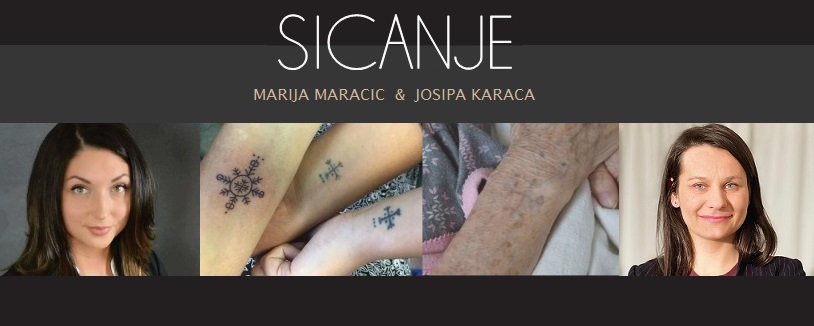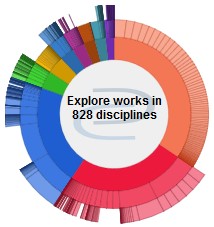The Sicanje Project
The Sicanje project provides a bank of primary interviews on the tradition of Sicanje/Bocanje which were executed in the summer of 2019 in Bosnia and Herzegovina. The interviews were conducted in the regions vernacular of Croatian, translated into English by Maracic and German by Karaca. The project features 24 interviews with transcriptions in PDF format, photographs, video and audio.
Sicanje, or bocanje, are interchangeable words, both referring to the same practice. This practice is carried by the Croatian Catholic population of modern-day Bosnia and Herzegovina. The tradition has been traced by many historians (among them, Edith Durham and Ciro Truhelka) back to similar regional practices by the Illyrians and the Thracians. Examples of this include Ancient Greek depictions of tattooed Illyrians on their vases, accompanied by archeological findings in the necropolises of Glasinac, where short and pointed bronze needles fixed to handles were discovered. As history progressed, the tradition of sicanje was re-attributed to Christianity.
The terms sicat and bocat directly translate to the act of pricking or poking. In this case, they refer to the poking of a needle into the surface of the skin, which some women state, went all the way down the bone. The coloring matter used during the pricking process is derived from a dark mixture. Although the mixture has regional variations, it is generally made with soot, which is stirred with honey and milk (often breast milk). The pattern would be pricked into the skin with the mixture until blood would breach the surface of the skin. At this point, the skin was covered by a blue cigarette paper, wrapped, and left overnight. Once the bandage was removed, the scab would flake and the pattern remained, eternally.
The women in our interviews speak of sicanje from their own knowledge. Most of them received theirs at a young age, when they were just girls, around the feast day of Saint Joseph. They speak of the oral history that they have been taught, focusing on the time of the Ottoman occupation. They tell of how these practices would protect the women from various invading entities, be it in the form of an overlord or members of other faiths. To wrap up each interview, we asked the women how they felt about carrying this traditional custom in modern day, to which the majority of them replied, that they were glad.
The goal of this project was to compile a set of primary resources that could be easily accessed in multiple languages and used for further publications and studies. We encourage you to read about the tradition of sicanje from the women who carry the tradition directly and we ask that you manage their stories with the same amount of respect that we have.
In order to remain authentic to each woman’s voice, we have handled the transcriptions of their interviews with immense care. The women speak a regional dialect of Croatian, that varies depending on what part of Bosnia and Hercegovina they from. We see their regional dialects as worth preserving and have attempted to stay true to them in our translations to English and German. We welcome you to meet each one of these women for yourselves and wish you a great endeavor in your learning journey!
Project Coordinator and Author: Marija Maračić
Born in Kraljeva Sutjeska, a town in the municipality of Kakanj, Bosnia and Herzegovina, Maracic fled to Germany during the Yugoslav Wars with her family; eventually emigrating to the United States in 1999. She received her Masters in History specializing in Art History from Cleveland State University in 2016 and a dual Bachelors from Bowling Green State University prior to this in 2011.
Project Co-Author: Josipa Karača
Born in Donja Vast / Uzdol, a small town in the municipality of Prozor - Rama, Bosnia and Herzegovina, Karača migrated to Austria before the Yugoslav Wars, in 1990. Together with her mother and sisters, she joined her father in Austria, who had been living and working there since the early 70s as a migrant worker. She received her Bachelor of Arts in Education from the University of Innsbruck in 2014 and is currently living in Innsbruck, where she works as a trainer with deaf and hearing-impaired adults.
Regional Guides in Bosnia and Herzegovina:
Biljana Glibo Bilić, Janja Lazić, Mijo Maračić, Ljilja Marić, Antonela Paponja.
Project Sponsors:
Nikolina Alaupovic, Marijana Anderson, Jelica & Boris Andrijic, Dinko Bačić, Mara Bakula, Ana Bakula, Vladimir Batinic, Jagoda B, Kata Beslic, Dragana Boras, Hadley K Conner, Julie Despot, Jelena Dordic, Ana Dorsey, Tom & Eileen Fallon , Rachel Harner, Christina House, Adrijana Jajcevic, Anto Jakovljevic, Natalia Jelovic, Davor Jozic, Vinko & Jelena Jozic, Maria Jukic, Jovanka Jukic, Ivan Jurcevic, Ljubinka Kapetanovic, Slavko Katic, Felix Kilimakher, Ivan Krnjić, Angela Križanac, Kulturno Drsutvo Hrvata BiH Kraljica Katarina Cleveland, Rosanna Pecirep Lanza, Mladen & Zorica Laush, Biljana Lovrinovic, Daniel Majhan, Dajana Markovic, Anto & Lucija Maracic, Mijo & Ruzica Maracic, Danijel Maracic, Robert Maracic, Elizabeth Maric, Pete Maric, Danijela Martinovic, Pero & Ruza Martinovic, Angela Miskic, Tatjana G. Palavra, Nika & Kristina Paulic, Elizabeth Pehar, Deborah Petri, David Petrovich, Natasa Rakic, Suzana & Ivan Sabljić, Andrea Sapina, Pero & Lucija Tolo, Ana Topalovic.
Printing is not supported at the primary Gallery Thumbnail page. Please first navigate to a specific Image before printing.























